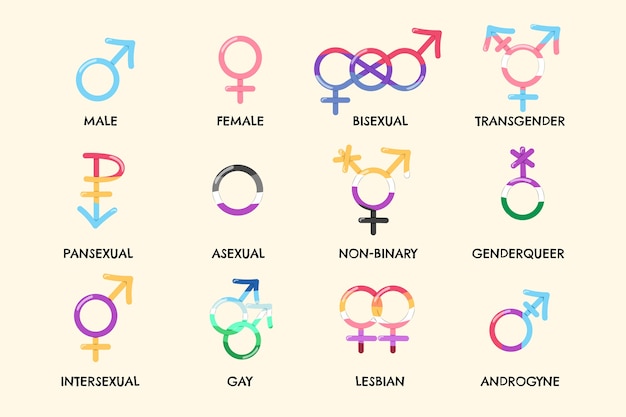


Image by Freepik
Some relevant definitions to know from the GLAAD Media Reference Guide (11th edition):
LGBTQ: Acronym for lesbian, gay, bisexual, transgender, and queer. Sometimes, when the Q is seen at the end of LGBT, it can also mean questioning. LGBT and/or GLBT are also often used. The term "gay community" should be avoided, as it does not accurately reflect the diversity of the community. Rather, LGBTQ community is preferred.
Asexual: An adjective used to describe people who do not experience sexual attraction (e.g., asexual person). A person can also be aromantic, meaning they do not experience romantic attraction.
Bisexual: A person who has the capacity to form enduring physical, romantic, and/or emotional attractions to those of the same gender or to those of another gender. People may experience this attraction in differing ways and degrees over their lifetime. Bisexual people need not have had specific sexual experiences to be bisexual; in fact, they need not have had any sexual experience at all to identify as bisexual.
Gay : The adjective used to describe people whose enduring physical, romantic, and/ or emotional attractions are to people of the same sex (e.g., gay man, gay people). Sometimes lesbian (n. or adj.) is the preferred term for women.
Intersex: An umbrella term describing people born with reproductive or sexual anatomy and/or a chromosome pattern that can't be classified as typically male or female. Those variations are also sometimes referred to as Differences of Sex Development (DSD.) Avoid the outdated and derogatory term "hermaphrodite." Intersex is not a gender or sexual orientation. Intersex people might identify with their gender assigned at birth or not. While some people can have an intersex condition and also identify as transgender, the two are separate and should not be conflated.
Lesbian: A woman whose enduring physical, romantic, and/or emotional attraction is to other women. Some lesbians may prefer to identify as gay (adj.) or as gay women.
Nonbinary: An adjective used by people who experience their gender identity and/or gender expression as falling outside the binary gender categories of man and woman. Many nonbinary people also call themselves transgender and consider themselves part of the transgender community. Others do not. Nonbinary is an umbrella term that encompasses many different ways to understand one's gender. Some nonbinary people may also use words like agender, bigender, demigender, pangender, etc. to describe the specific way in which they are nonbinary.
Queer: An adjective used by some people, particularly younger people, whose sexual orientation is not exclusively heterosexual (e.g. queer person, queer woman). Typically, for those who identify as queer, the terms lesbian, gay, and bisexual are perceived to be too limiting and/or fraught with cultural connotations they feel don't apply to them. Once considered a pejorative term, queer has been reclaimed by some LGBT people to describe themselves; however, it is not a universally accepted term even within the LGBT community. When Q is seen at the end of LGBT, it typically means queer and, less often, questioning.
Sexual Orientation: The scientifically accurate term for an individual's enduring physical, romantic and/or emotional attraction to members of the same and/or opposite sex, including lesbian, gay, bisexual, and heterosexual (straight) orientations.
Transgender: An adjective to describe people whose gender identity differs from the sex they were assigned at birth. People who are transgender may also use other terms, in addition to transgender, to describe their gender more specifically. It is important to note that being transgender is not dependent upon physical appearance or medical procedures. A person can call themself transgender the moment they realize that their gender identity is different than the sex they were assigned at birth.
Two-Spirit: An adjective used by some Indigenous and First Nations people as an umbrella term to describe people who are not straight and/or cisgender. Many Indigenous communities have specific words in their language to describe these experiences, but some do not. This term should not be used to describe people who are not Indigenous. Only use it for an Indigenous person if they use it to describe themselves.